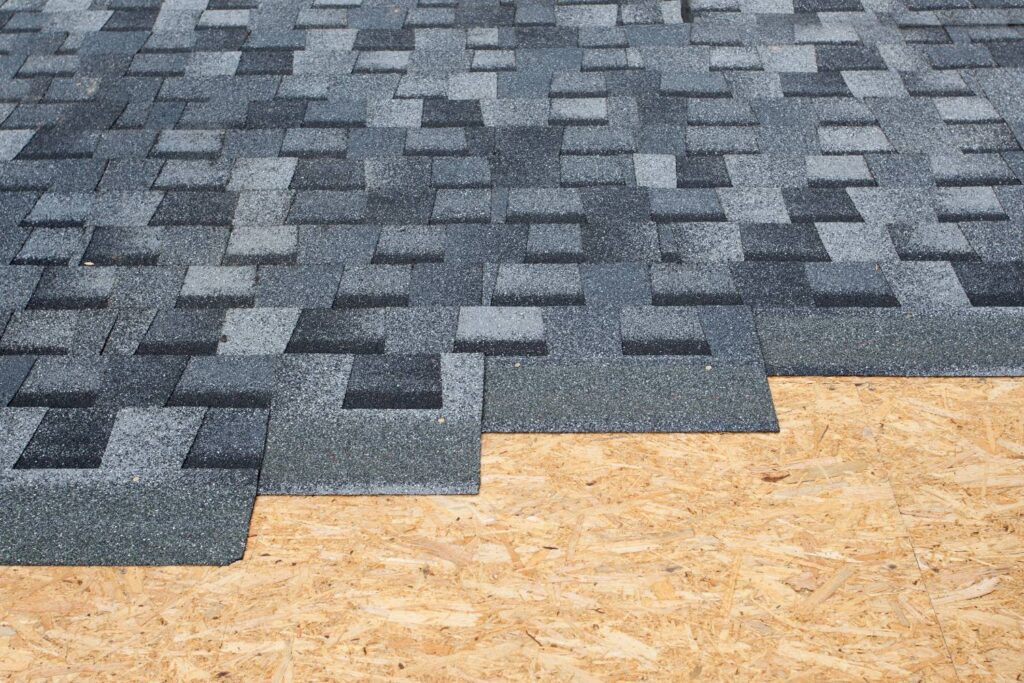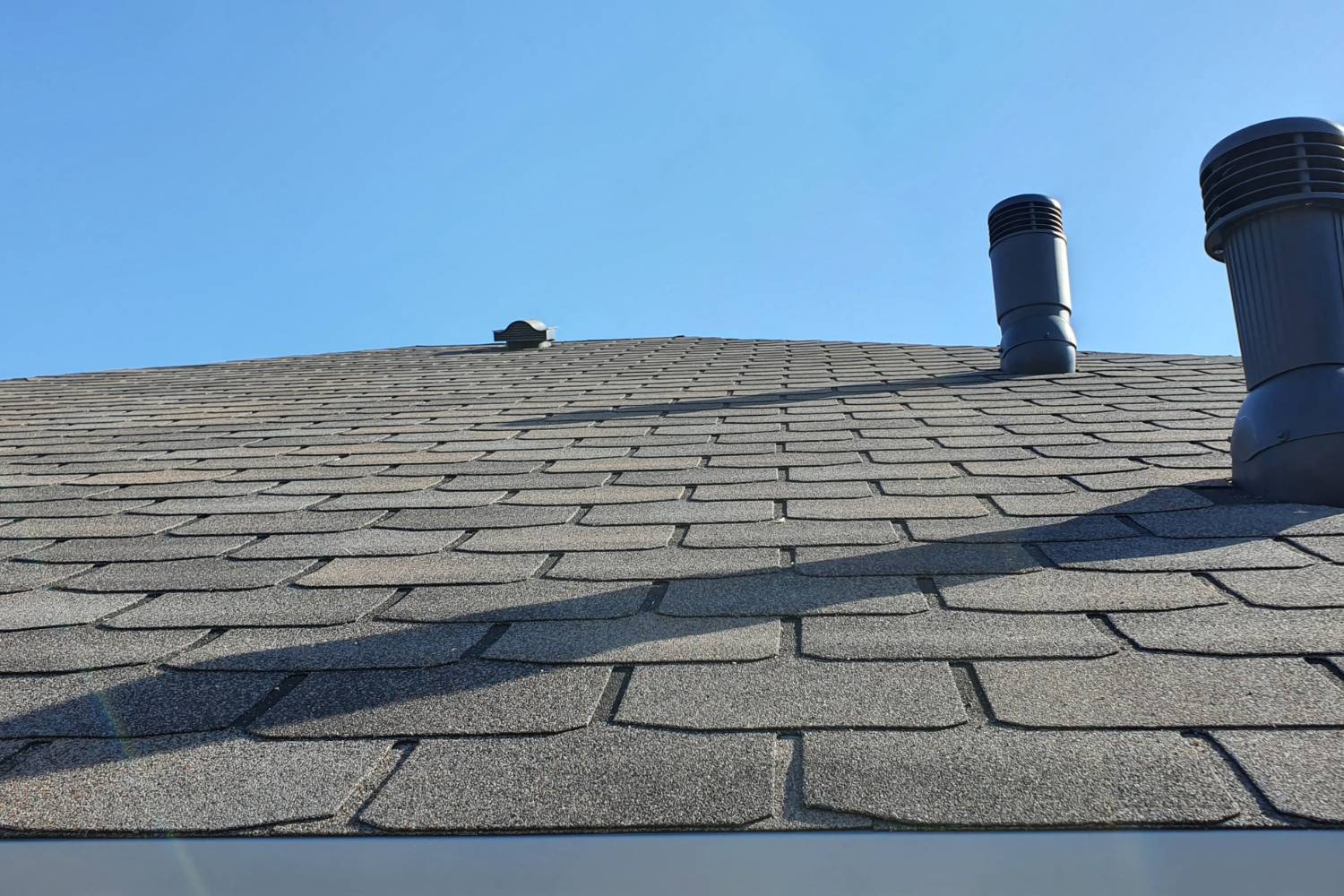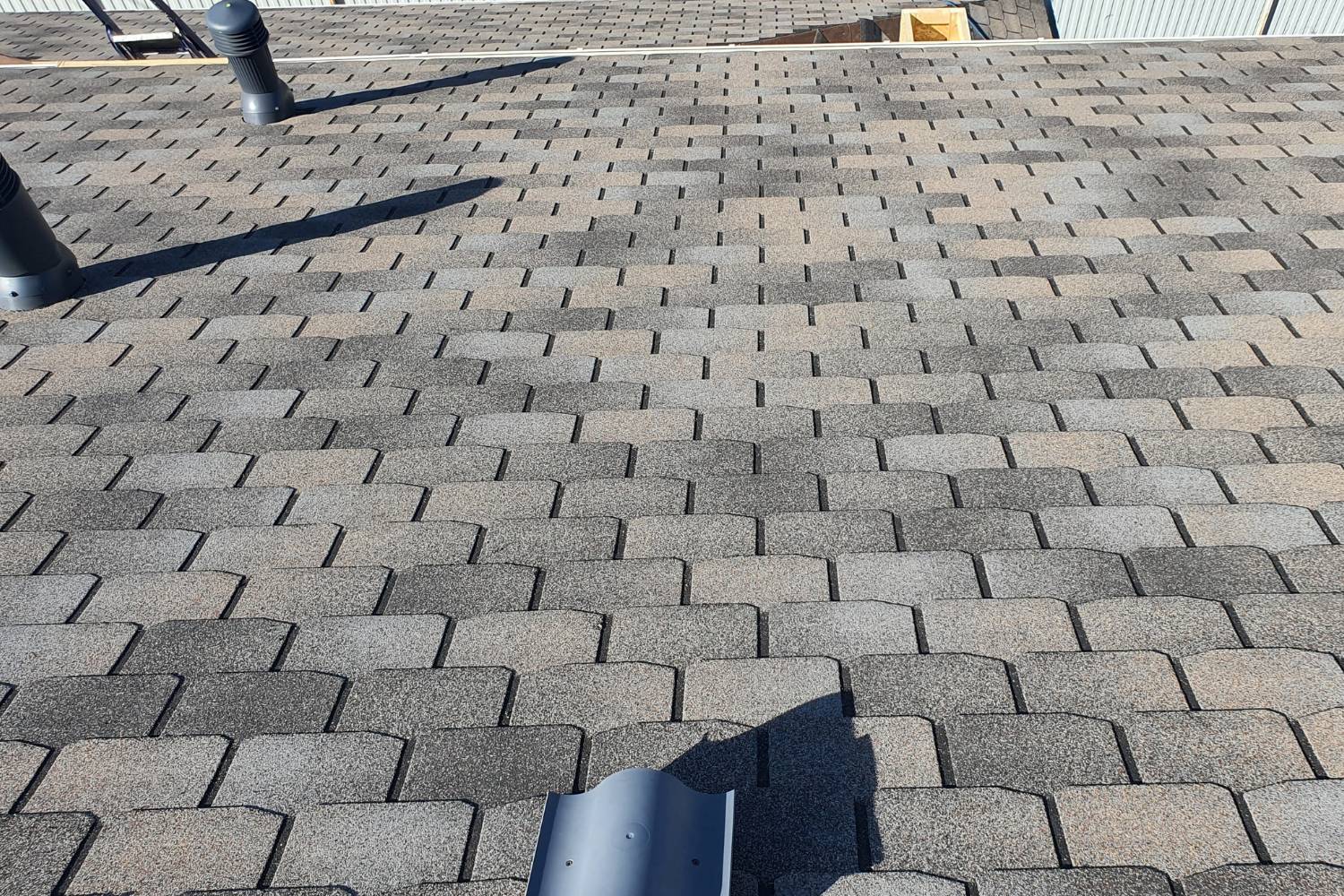Roof cleaning is a crucial aspect of maintaining your home’s overall health and appearance. Different roofing materials require specific cleaning techniques to ensure their longevity and effectiveness.
In this guide, we delve into the best practices for cleaning various types of roofs, from asphalt shingles to metal and tile roofs and even delicate slate roofs. Learn how to preserve your roof's integrity while keeping it free from debris, moss, algae, and other damaging elements. Let's explore the most effective and safe methods to keep your roof in top condition.
What Are The Best Techniques For Cleaning Asphalt Shingle Roofs?
Maintaining an asphalt shingle roof involves understanding the best cleaning practices to preserve its longevity and appearance. Here are key techniques and tips gathered from various expert sources to ensure your roof remains in optimal condition.
General Guidelines And Safety
- Avoid Walking on the Roof: Unless experienced, do not climb on your roof without proper safety equipment. The risk of injury is significant without adequate precautions.
- Preventative Maintenance: Regular cleaning and maintenance can prevent dirt, debris, moss, and algae buildup, extending the roof's lifespan.
- Professional Consultation: If unsure about cleaning methods, consider consulting with a professional roofing company for advice and safe cleaning procedures.
Dos And Don’ts Of Cleaning Asphalt Shingles
Dos
- Use a Gentle Cleaning Solution: Mix equal parts of water and chlorine bleach or white vinegar to create a mild cleaning solution. This helps in removing moss and algae without damaging the shingles.
- Apply the solution on a Calm, Cloudy Day: Clean your roof on a calm, cloudy day to prevent the solution from evaporating too quickly and ensure its effectiveness.
- Protect Landscaping: Wet and cover plants and shrubs around your home to shield them from any harmful effects of the cleaning solution.
- Trim Overhanging Branches: Reduce shade on your roof to minimise moisture retention and moss growth. Clean gutters regularly to maintain proper drainage.
Don’ts
- Avoid Pressure Washers: High-pressure washing can loosen shingles and strip away protective granules, causing significant damage.
- Do Not Use Abrasive Tools: Stiff brushes and metal scrapers can scratch shingles and create openings for water penetration.
- Avoid Harsh Chemicals: Using strong chemicals like bleach excessively can damage shingles and harm the surrounding environment.
- Do Not Clean on Sunny Days: The cleaning solution can evaporate too quickly on sunny days, reducing its effectiveness.
Removing Moss And Algae
- Prepare a Cleaning Solution: Mix a solution of water and white vinegar or chlorine bleach. For stubborn moss, a solution of hydrogen peroxide and water (1:5 ratio) can be effective.
- Apply the Solution: Use a sprayer to apply the solution evenly across the roof. Let it sit for 15-20 minutes to break down the moss and algae.
- Gentle Scrubbing: Use a soft-bristled brush to gently scrub the affected areas. Avoid excessive force to prevent damage.
- Rinse Thoroughly: Rinse the roof with a garden hose to remove the cleaning solution and debris.
Preventative Measures
- Install Copper or Zinc Strips: Place these metal strips below the ridge of your roof to inhibit moss and algae growth.
- Regular Debris Removal: Use a leaf blower to clear leaves and twigs from your roof and gutters, promoting proper drainage and reducing moisture buildup.
How Do You Clean A Metal Roof?
Cleaning a metal roof is essential for maintaining its durability and appearance. Proper cleaning not only prolongs the life of the roof but also helps identify potential damage early on. Here is a comprehensive guide on how to clean a metal roof effectively.
Why Clean A Metal Roof?
Regular cleaning of a metal roof significantly extends its lifespan. By periodically removing particles that can degrade the paint and metal over time, you ensure the roof maintains its structural integrity and aesthetic appeal. Accumulated elements such as dirt, leaves, pollen, and pollution can affect the roof's appearance and function. Moreover, a clean roof enhances the overall visual appeal of your home, making it look well-maintained and attractive.
Safety Precautions
Before starting the cleaning process, prioritise safety by wearing protective gear, including gloves, goggles, and non-slip footwear. Ensure the ladder you use is stable, and consider using a safety harness if you are working at significant heights. Be mindful of any electrical hazards, such as power lines, near your work area to avoid accidents.
Cleaning Methods
There are several methods to clean a metal roof effectively. One basic method involves using water and dish soap. You can clean the roof with a non-abrasive sponge or cloth, and for tougher spots, use a soft bristle brush with an extension arm.
Avoid using any abrasives to prevent scratching the roof’s surface. Another method involves using water and roof detergent. Mix the roof detergent with water following the instructions on the detergent’s label, apply the solution, and scrub the tough spots for better results.
Cleaning with a water and vinegar solution is another effective and safe method. Mix one cup of vinegar with two cups of water to clean and shine your metal roof without using harsh chemicals. To eliminate moss, mildew, or mould, a solution of water and bleach can be used. Combine one part bleach with eight parts water, and let the solution sit for five minutes before rinsing it off.
Pressure washing is probably the most effective method for cleaning a metal roof. Use a pressure washer with a wide-angle spray nozzle and keep the pressure setting low to avoid damaging the roof. Maintain a safe distance and use sweeping motions to ensure thorough cleaning.
Special Cleaning Considerations
To remove mildew, algae, or mould from metal roofs, especially in humid climates, mix 1/3 cup of powdered laundry detergent with one quart of bleach and three quarts of water. Apply this mixture with a soft brush, scrub gently, and then rinse thoroughly with plain water. If you encounter rust stains, start with mild abrasive cleaners.
For mild stains and for more severe rust stains, mix five parts of water with one part of hydrochloric acid, citric acid, muriatic acid, oxalic acid, or vinegar. Apply this solution with a rag, use circular wiping motions, and rinse immediately after the rust stain has cleared.
Tools And Products
The right tools and products are essential for cleaning a metal roof. Suitable tools include washcloths, sponges, soft bristle brushes, and non-abrasive pads. For cleaning products, plain water can be effective for removing dirt and dust. Most people will need to use mild detergents such as laundry detergents, car washing soap, or dish soap. Solvents like rubbing alcohol, mineral spirits, and VM&P Naphtha can be used for tougher stains but should be used with caution and only on affected spots.
What To Avoid
Certain tools and products should never be used on a metal roof as they can cause significant damage. Avoid using steel wool, wire brushes, sandpaper, high-pressure power washers, scouring powders, paint removers, and paint thinners. Additionally, avoid overusing cleaning agents. Follow the directions on cleaning products carefully to prevent damage to the roof and avoid voiding any warranties.
What Is The Proper Way To Clean A Tile Roof?
Cleaning a tile roof is an essential maintenance task that preserves its longevity and aesthetic appeal. Here’s a comprehensive guide on the best practices for cleaning tile roofs based on insights from various expert sources.
Why Clean Your Tile Roof?
Cleaning your tile roof prevents moisture issues, as moss and algae retain moisture that can lead to potential water damage. It also helps maintain the structural integrity of the roof by removing dirt that can deteriorate tiles and weaken the roof’s structure. Additionally, cleaning the roof enhances the appearance of your home, keeping it looking fresh and attractive.
Manual Cleaning
Manual cleaning involves using tools like a trowel and stiff brush along with appropriate safety equipment. The process includes scraping off moss, algae, and dirt using a trowel or stiff brush. It is important to ensure the day is dry to prevent materials from sticking to the tiles, making the cleaning process more efficient.
Chemical Treatments
Chemical treatments such as moss killers, fungicides, and anti-moss treatments are effective in cleaning tile roofs. These chemicals should be applied after scraping off loose debris to ensure they penetrate all cracks and crevices. When using chemical treatments, it is crucial to protect surrounding plants and ensure that the runoff does not contaminate drinking water sources.
Pressure Washing
Pressure washing is another method for cleaning tile roofs, but it comes with certain precautions. It is essential to use low pressure to avoid damaging the tiles and maintain a safe distance to prevent stripping the tiles’ protective finish. Before using a pressure washer, check with tile manufacturers to ensure that pressure washing will not invalidate any warranties.
Using Specialised Tools
Specialised tools like the SkyScraper Roof Moss Remover allow for the removal of moss from the ground, enhancing safety and convenience. This tool helps avoid the risks associated with climbing onto the roof, making the cleaning process safer and more efficient.
Tips For Effective Cleaning
For effective cleaning, it is recommended to start at the highest point of the roof and work your way down. This method prevents re-contamination of already cleaned areas. Safety is paramount during the cleaning process; using ladders safely, wearing non-slip footwear, and considering the use of a harness are essential safety measures.
Additionally, routine inspections of your roof are important. Regularly inspecting your roof for damage and performing necessary repairs promptly will help maintain the roof’s condition and prevent major issues.
How Should You Clean A Slate Roof?
Maintaining a slate roof is essential to preserve its aesthetic and functional longevity. Proper cleaning is a critical aspect of this maintenance. Here are the key steps and considerations for effectively cleaning a slate roof:
Inspection Before Cleaning
Before embarking on cleaning your slate roof, it is crucial to conduct a thorough inspection. This should be done before the rainy or cold seasons to ensure the roof is in good condition. It is advisable to perform inspections in the spring or summer to check for any moisture damage. During the inspection, look for signs of cracked, misaligned, or broken shingles. This step helps identify any potential issues that need to be addressed before cleaning.
Using Pressurised Water
One of the most effective methods for cleaning a slate roof is using high-pressure water jets. These jets can efficiently remove accumulated dirt, dust, mould, and small plant growth. However, it is essential to exercise caution when using this method. Avoid walking on the roof, as this can cause significant damage. Additionally, make sure not to apply the jet from the bottom up, as this can lift shingles and allow water to seep underneath. After cleaning, ensure you clean the debris out of the gutters. Given the risks involved, it is recommended to hire professionals who are familiar with slate roof maintenance.
Mechanical Methods
Pressure washers are generally effective for cleaning slate roofs, but they require careful handling. It is crucial to avoid applying water from the bottom upwards to prevent water from seeping under the roof. Due to the potential risks, only qualified professionals should perform this cleaning method to avoid damage and ensure safety.
Cleaning Plant Growth
Removing plant growth from a slate roof is often only a temporary solution. After removal, the surface of the roof may become more prone to new growth due to microscopic pitting. It is important to avoid using harsh chemicals such as bleach or ammonia, as these can damage the slate's copper components. Instead, using acetic acid, commonly known as vinegar, is a safer and equally effective method. Vinegar is readily available and does not pose the same risks as other chemicals.
Maintenance Recommendations
Maintaining a slate roof requires regular cleaning and inspections. It is recommended that the roof be cleaned about three times a year. Regular visual inspections should be performed using binoculars and a ladder, especially after severe storms. In addition, professional inspections should be scheduled every five years or more frequently in areas with severe weather conditions. These inspections will help identify any issues early and ensure the roof remains in good condition.
Techniques Used By Professionals
Professional cleaning services employ several techniques to ensure the safe and effective cleaning of slate roofs. One common method is soft washing, which is safe for removing debris and growth without damaging the roof. Occasionally, ultra-light pressure washing is used, but this is done with great care. Professionals often clean from ladders to prevent walk-on damage, ensuring the roof's integrity is maintained.
Conclusion
Maintaining a clean roof is essential for protecting your home and enhancing its visual appeal. Each type of roofing material—whether asphalt shingles, metal, tile, or slate—requires specific cleaning techniques to ensure its longevity and effectiveness. By following the best practices and safety guidelines outlined in this guide, you can keep your roof in top condition, free from debris, moss, algae, and other damaging elements.
Regular cleaning and preventative maintenance not only extend the life of your roof but also help in the early detection of potential issues, allowing for timely repairs. Whether you choose to undertake the task yourself or hire professional services, understanding the appropriate methods and tools for your roof type is crucial. Keep your roof clean and well-maintained, and enjoy the lasting benefits of a protected and aesthetically pleasing home.
Frequently Asked Questions
For asphalt shingle roofs, soft washing is the recommended technique. This involves using a low-pressure water spray combined with biodegradable cleaning solutions to remove algae, moss, and debris without damaging the shingles.
Metal roofs can be cleaned using a mixture of water and mild detergent applied with a soft brush or cloth. Pressure washing at a low setting is also effective, but it's essential to avoid high pressure as it can dent the metal or strip protective coatings.
Tile roofs should be cleaned using a low-pressure washer or a garden hose with a nozzle attachment to remove dirt and moss. Avoid walking on the tiles as they can break easily; use a ladder or safety harness to maintain stability. A mixture of water and mild detergent can be used for stubborn stains.
No, slate roofs should not be pressure washed as the high pressure can crack the slate tiles. Instead, use a gentle cleaning solution and a soft brush to remove moss and debris. Rinse with a low-pressure hose to avoid damage.
Wooden shake roofs should be cleaned using a combination of low-pressure washing and gentle brushing. Avoid using harsh chemicals that can degrade the wood. After cleaning, applying a wood preservative is beneficial to protect the shakes from moisture and UV damage.


